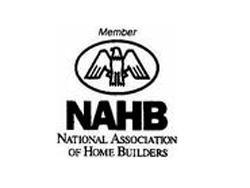Housing Affordability Challenges Rising in 2022, Says NAHB
Washington, DC, April 11, 2022-Rising mortgage interest rates, spurred by expected, significant tightening of monetary policy by the Federal Reserve, will aggravate housing affordability challenges in 2022, reports the National Association of Home Builders (NAHB). This is particularly the case for prospective first-time homebuyers, who face higher costs and elevated home prices without the benefit of gains in home equity and household wealth possessed by existing homeowners.
Similar to what occurred in 2018, higher mortgage rates will slow sales and construction in an otherwise positive demand-side environment. For example, in the March NAHB/Wells Fargo Housing Market Index reading of builder sentiment, the measure of future sales expectations fell a notable ten points for the month. Since the start of the year, the average 30-year fixed-rate mortgage increased from 3.1% to 4.67% by the end of March - the fastest rate increase in percentage terms in decades.
New home sales in February reflect the impact of only about half of this expansion for mortgage rates. Nonetheless, sales slipped 2% from January to February, registering a 772,000 seasonally adjusted annual rate. This is 6.2% lower than a year prior, with pricing up 10.6% year-over-year. It is worth noting that some of this sales decline is due to builders deliberately slowing sales to help counterbalance supply-chain delays.
Inventory is balanced at a 6.3-month supply, with the number of new single-family homes available for purchase (whether started or completed construction) up 33% over the last year. Because of the acceleration of sales in late 2020 and the corresponding gains in housing starts, net residential construction jobs have increased by 103,000 over the last year, with an almost 11,800 gain in March alone. The unemployment rate for construction workers is at a low 4.8%. Due to the skilled labor shortage, wages are up 6% year-over-year as of March. There are now 381,000 open, unfilled positions in the construction sector.
Higher inflation and business costs, combined with increasing interest rates, tightened monetary policy and waning fiscal stimulus, will slow overall economic growth in 2022. While most forecasters, including NAHB, do not predict a recession during 2022, the risk of a recession next year is rising. The Fed’s intended aggressive policy path for higher rates would guarantee an economic slowdown and risk an outright recession in 2023. To engineer a soft landing, tightened monetary policy must be complemented with fiscal and regulatory policy that helps ease the economy’s myriad supply-side challenges.
